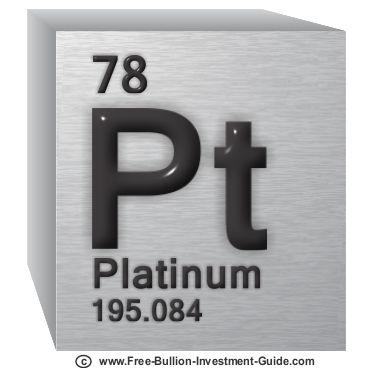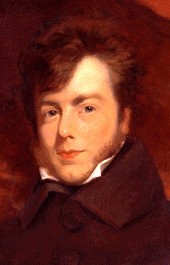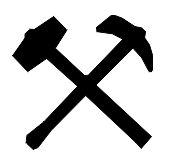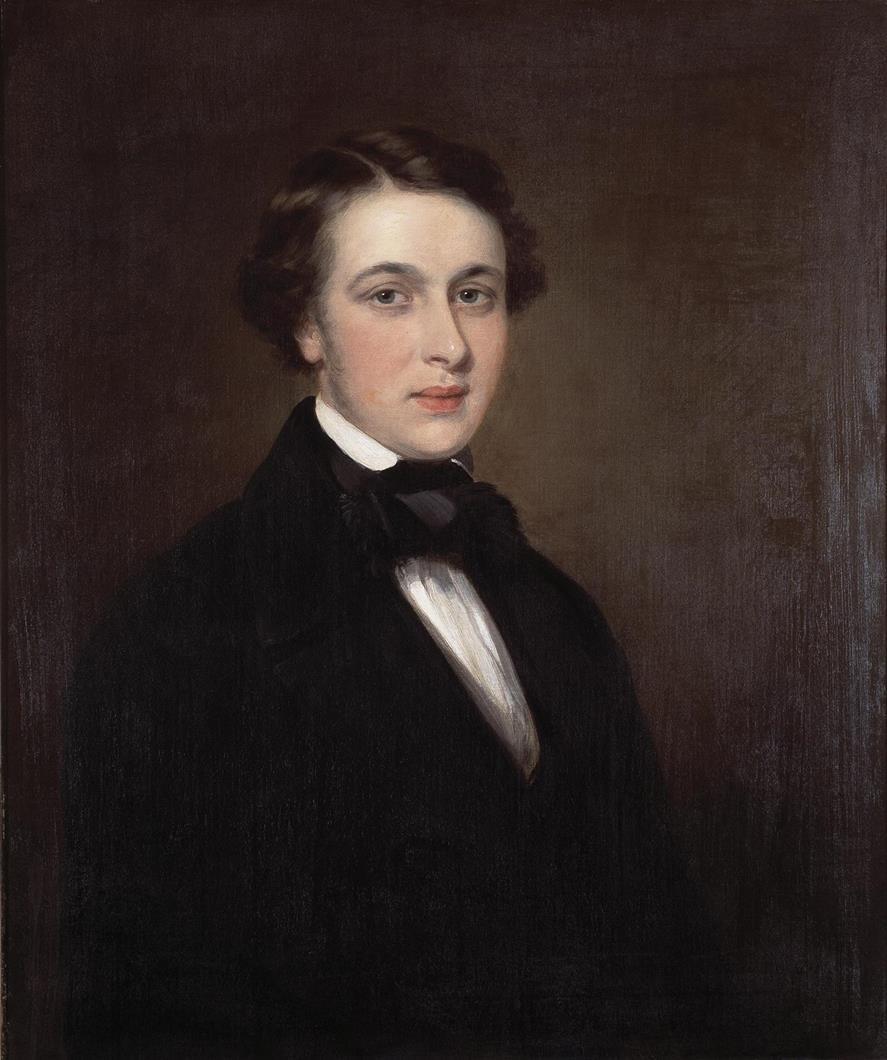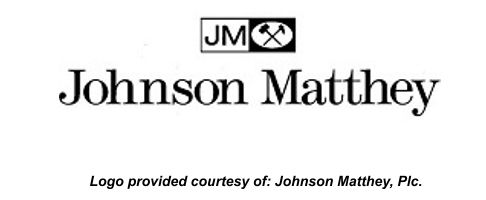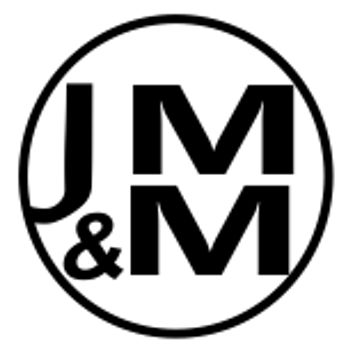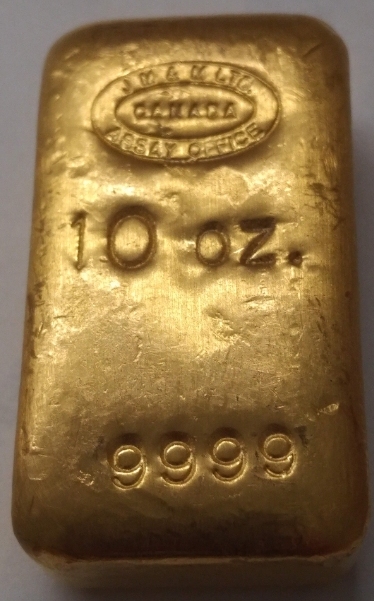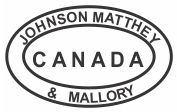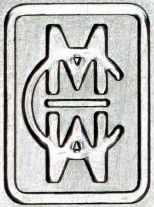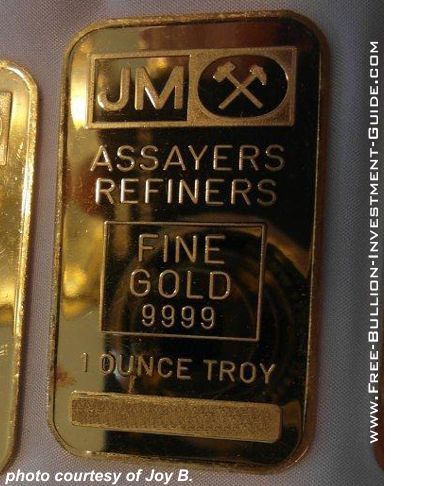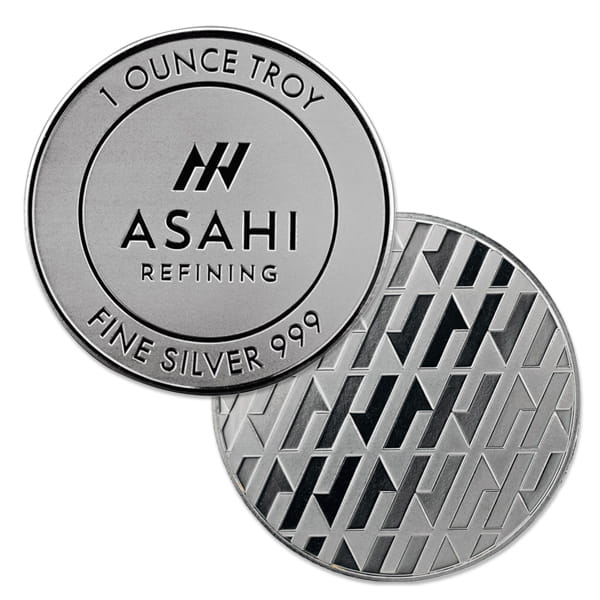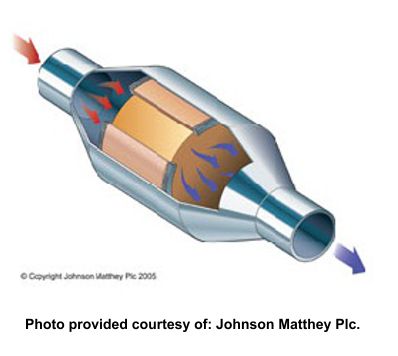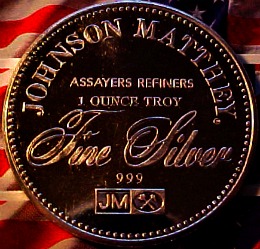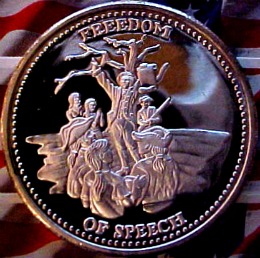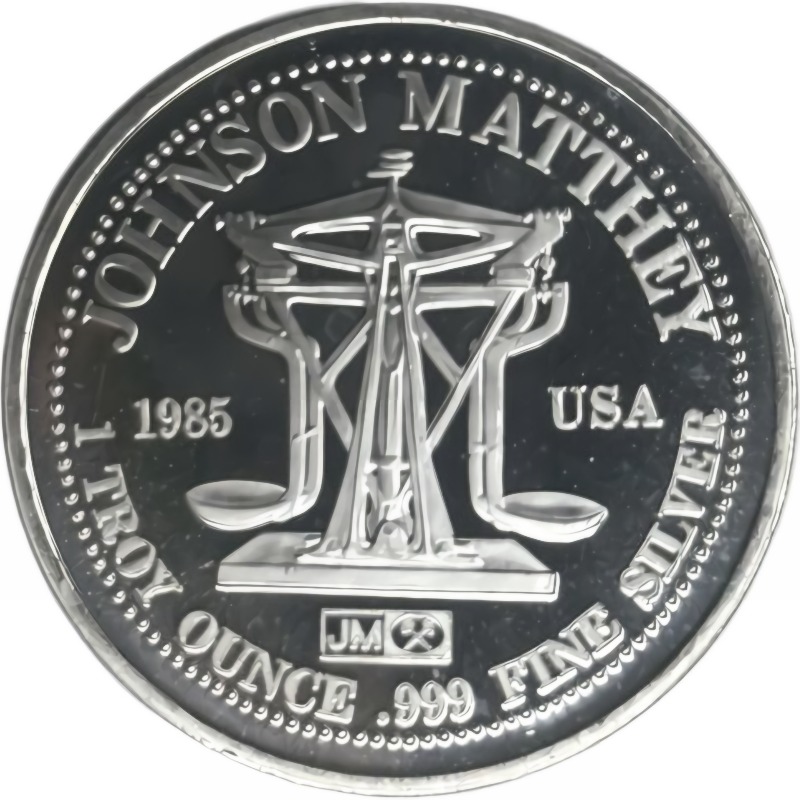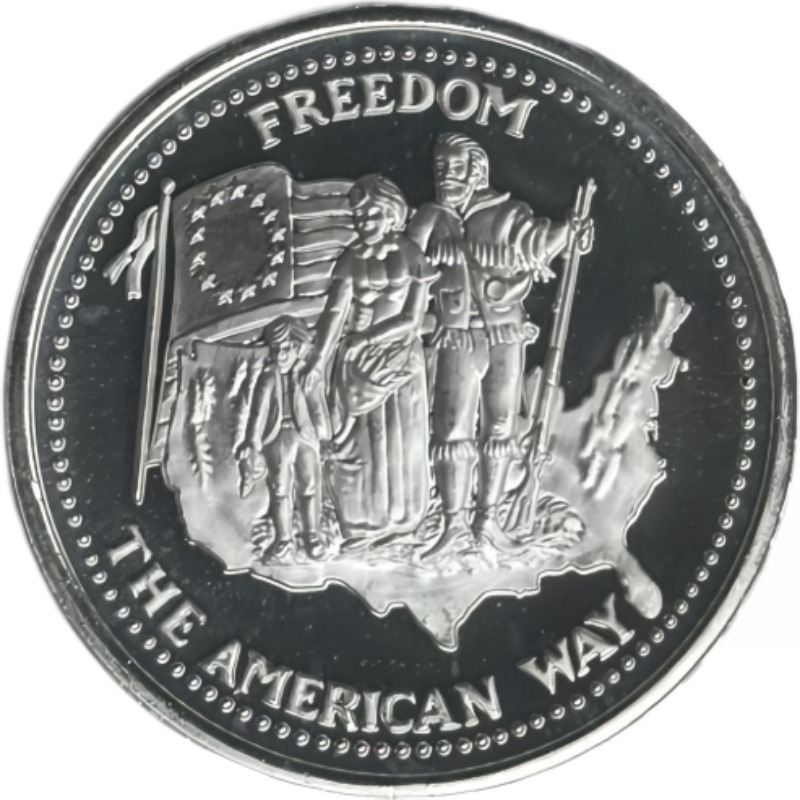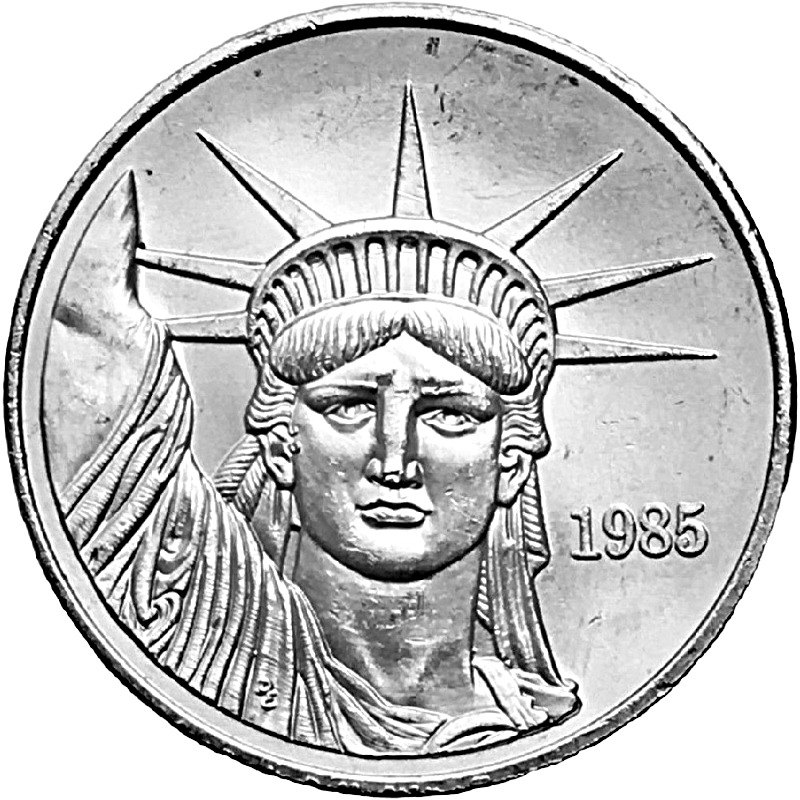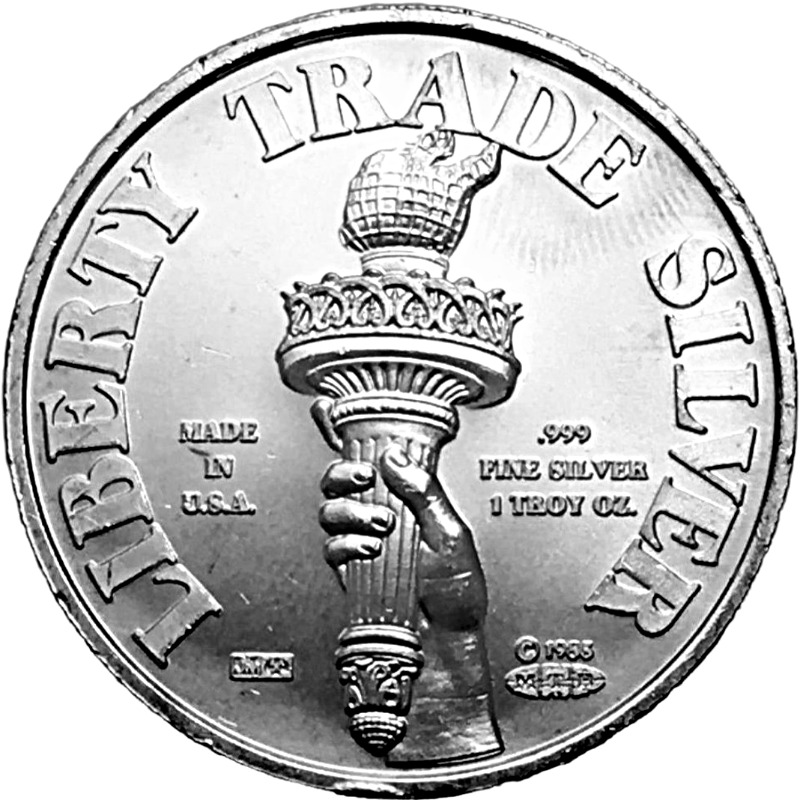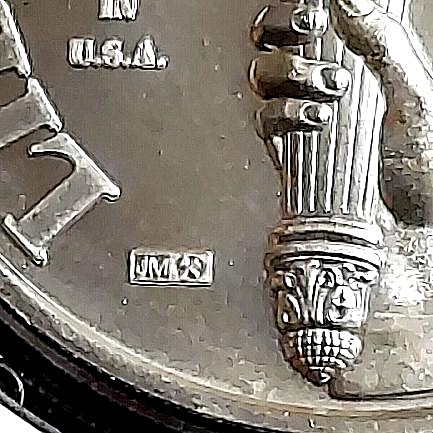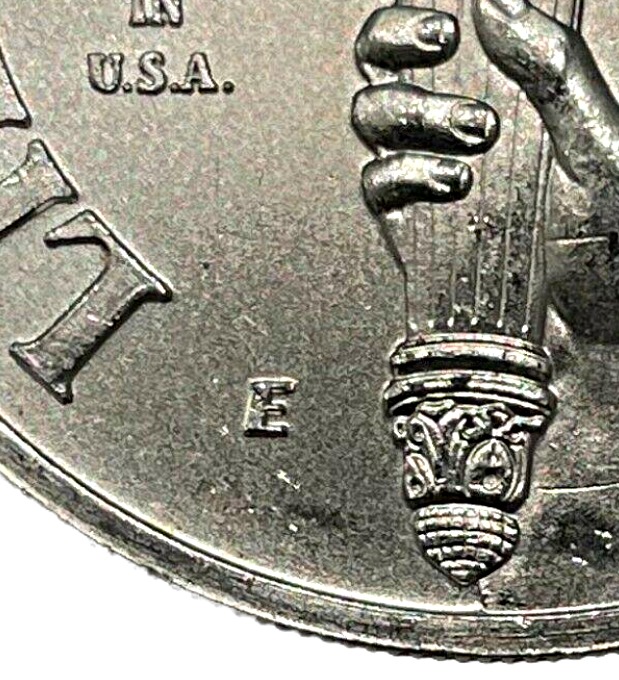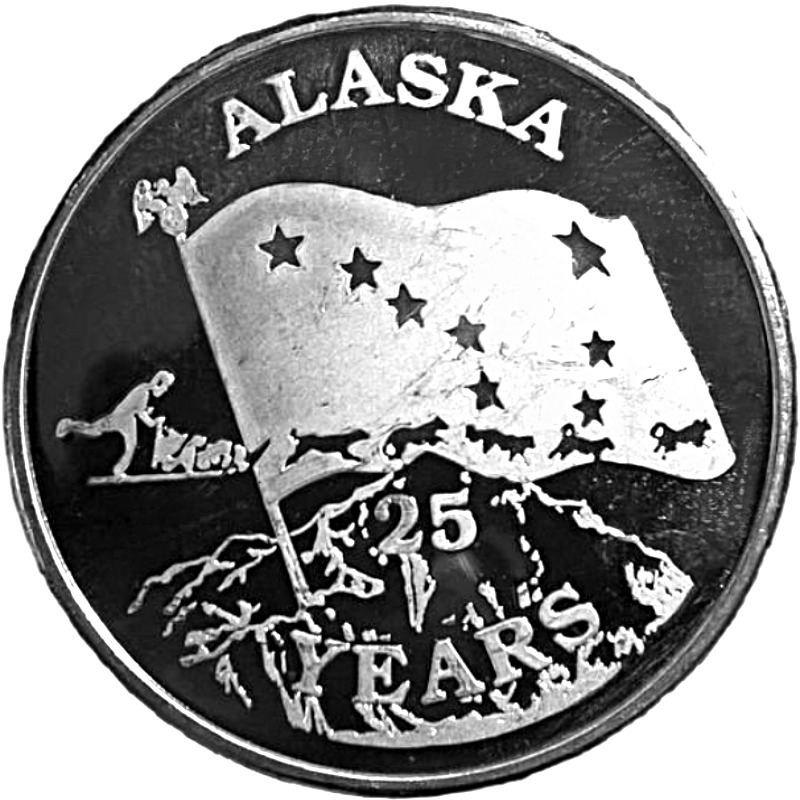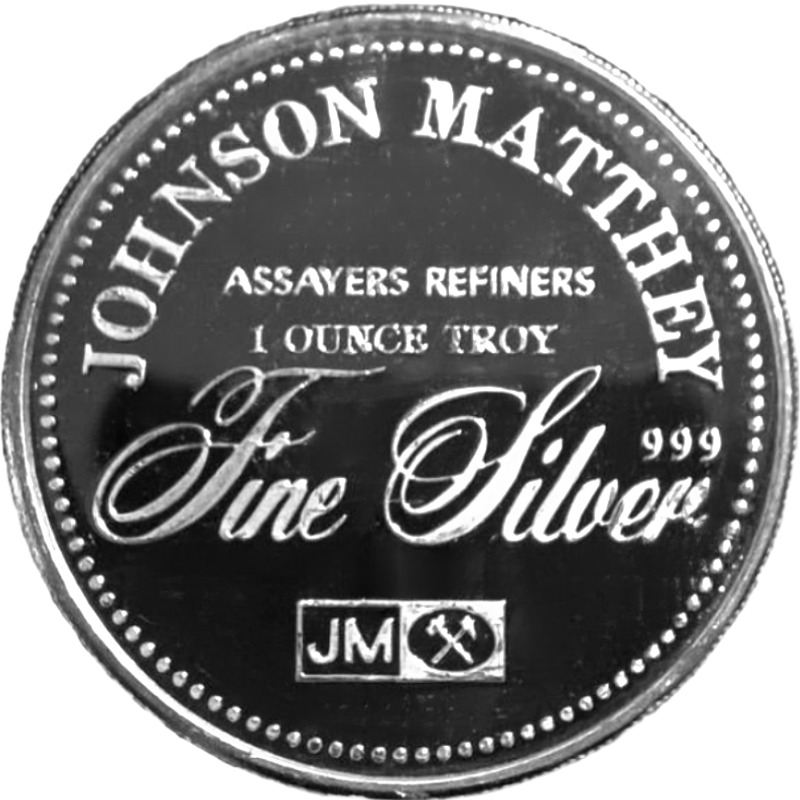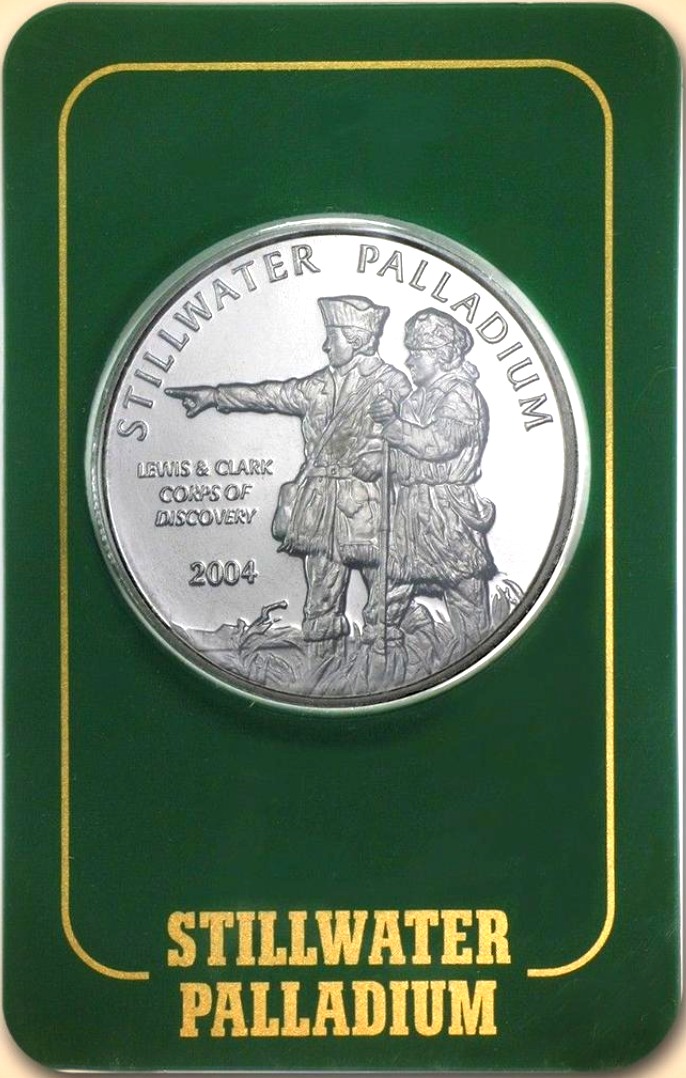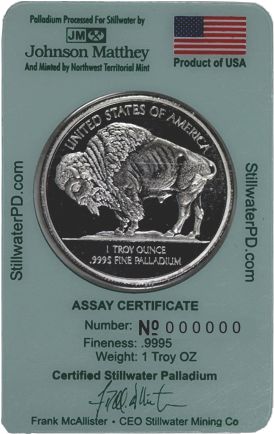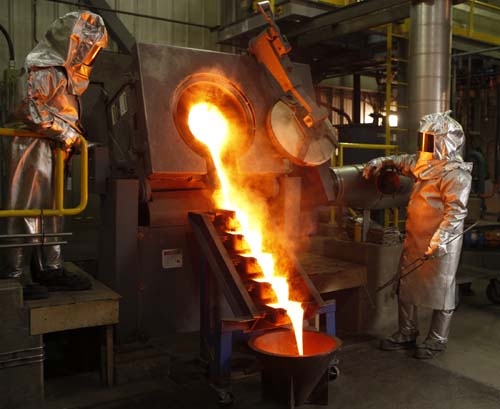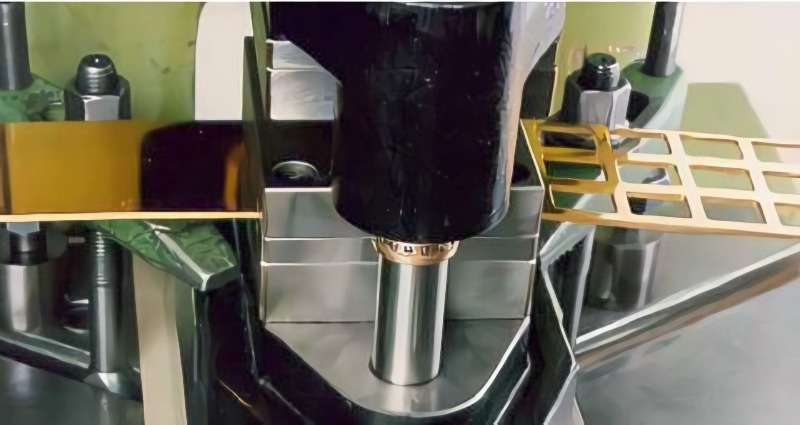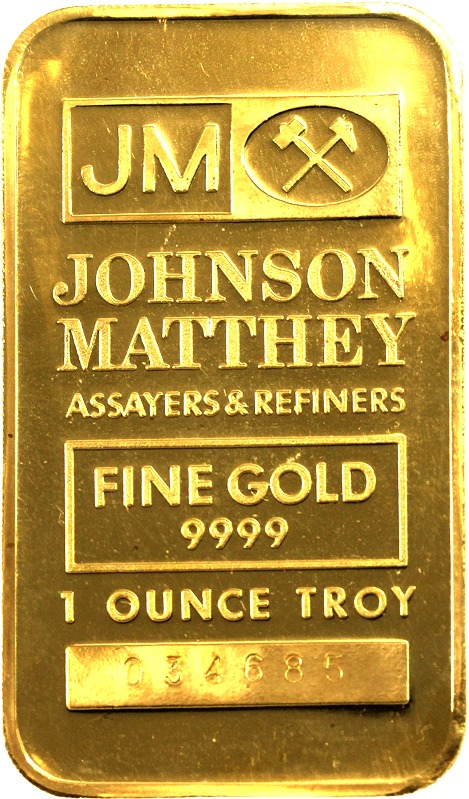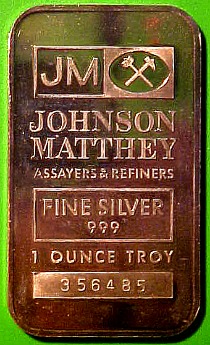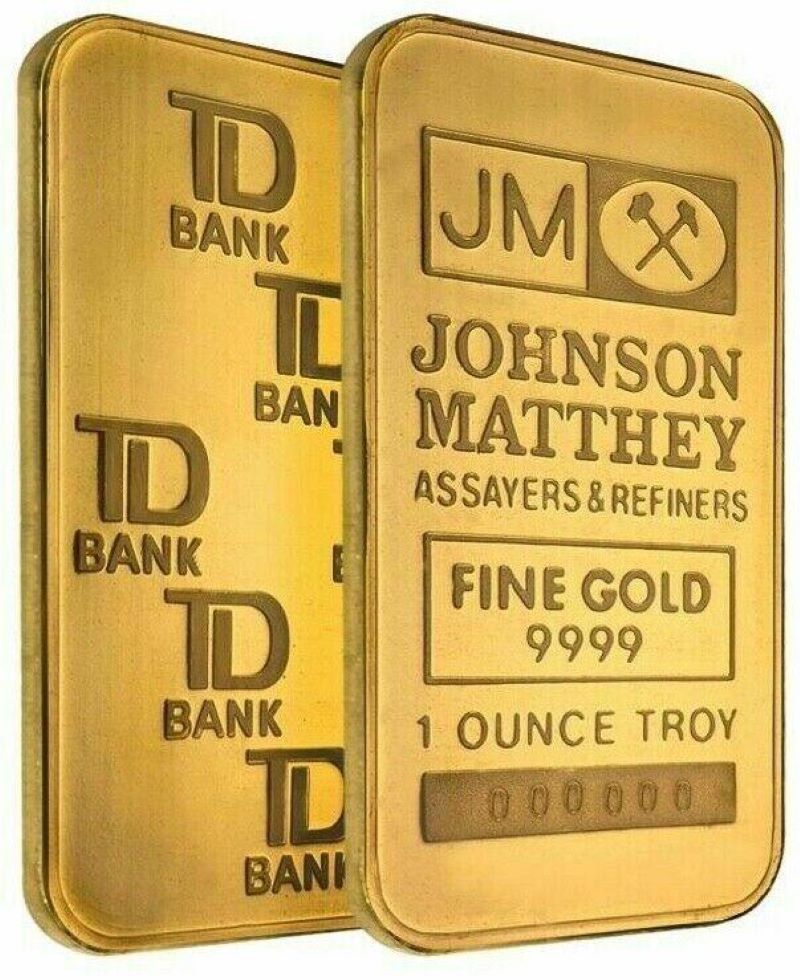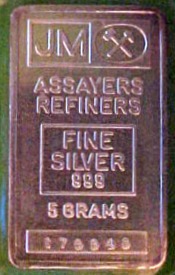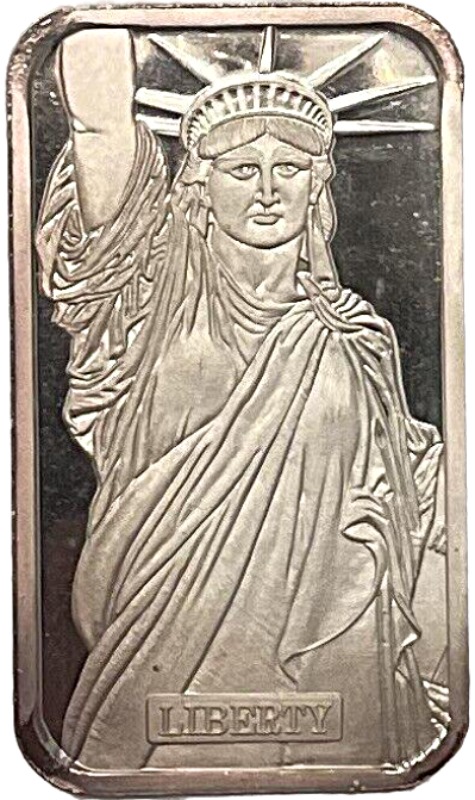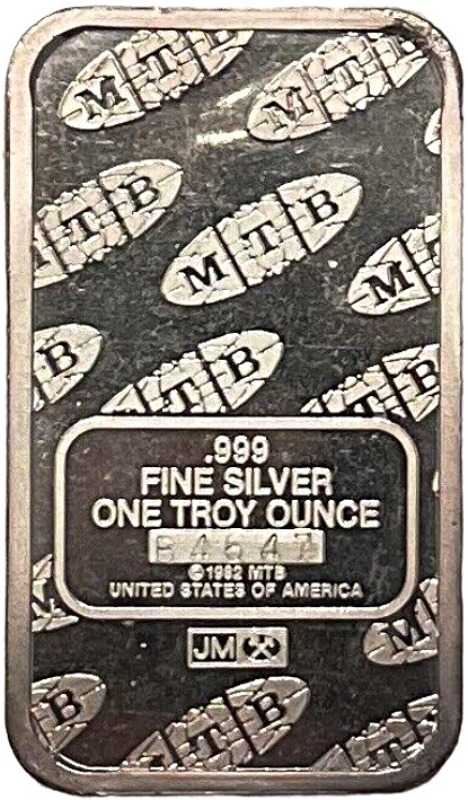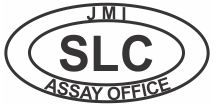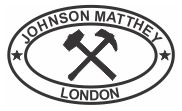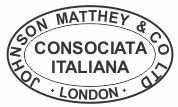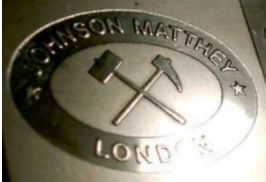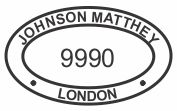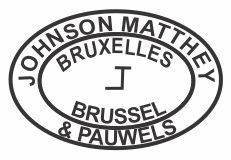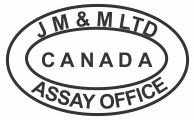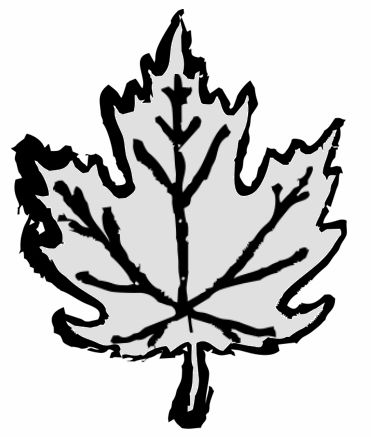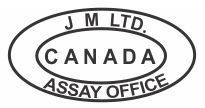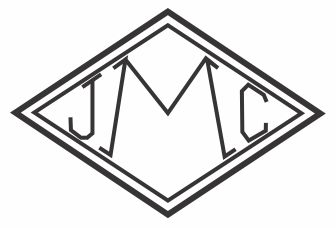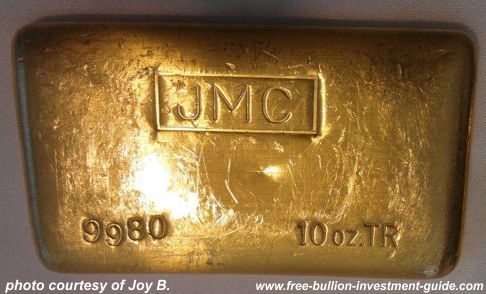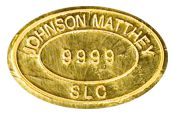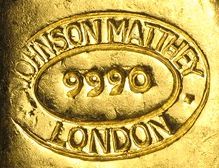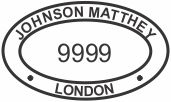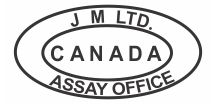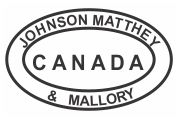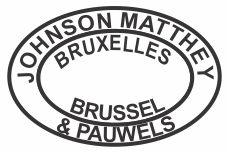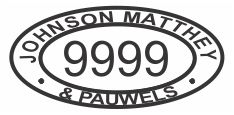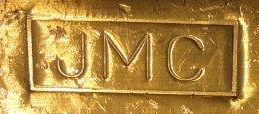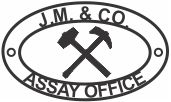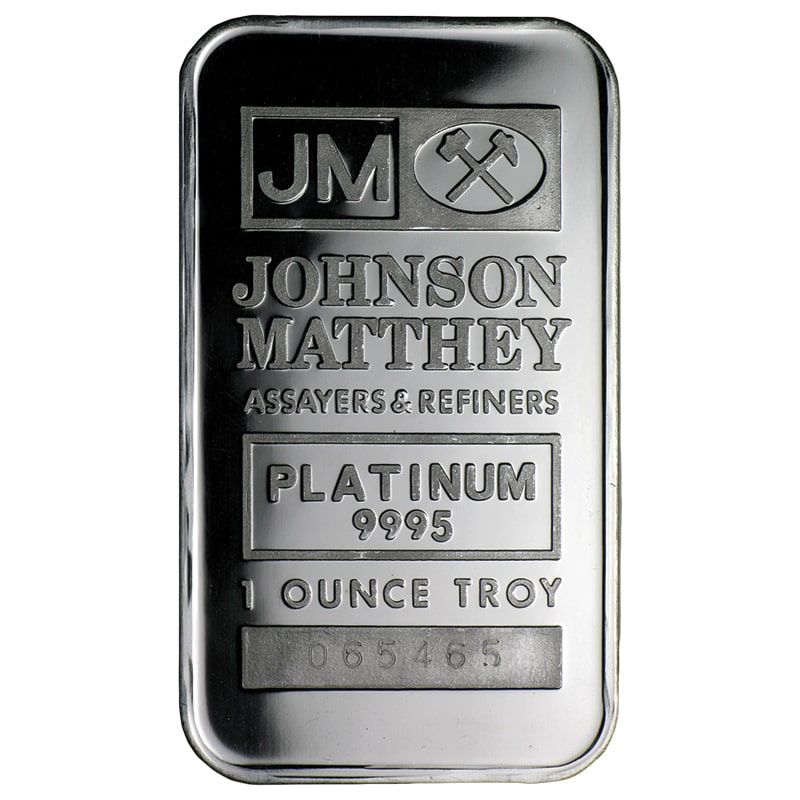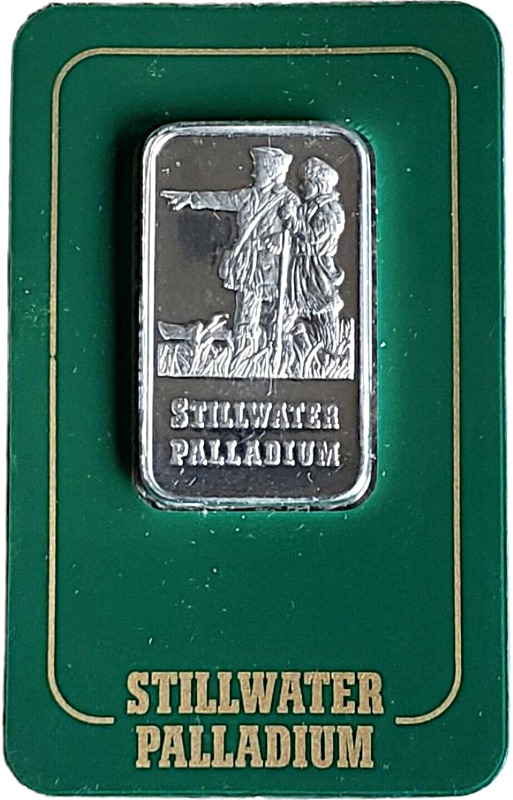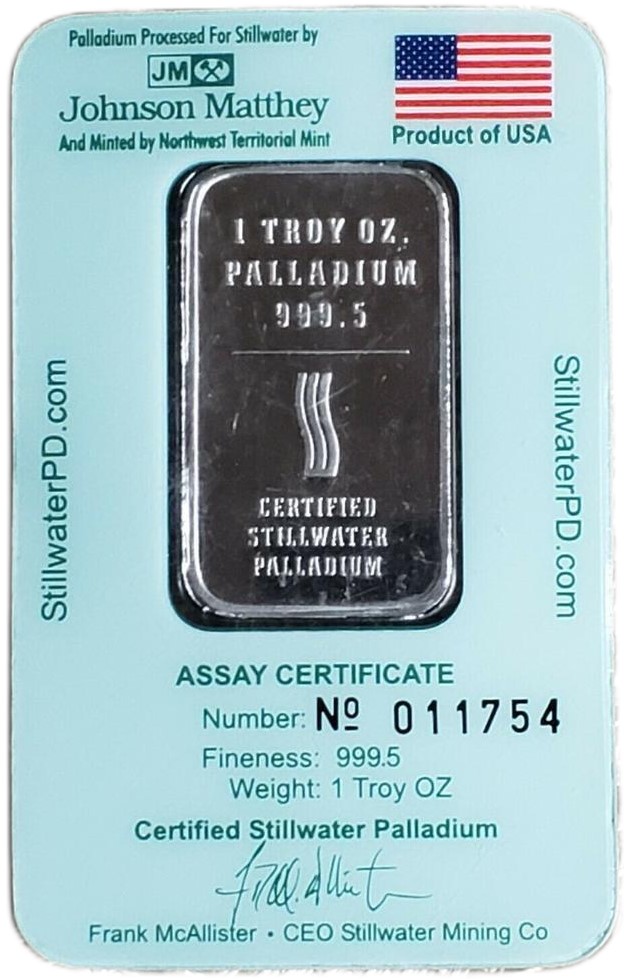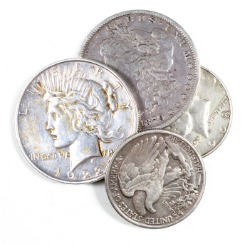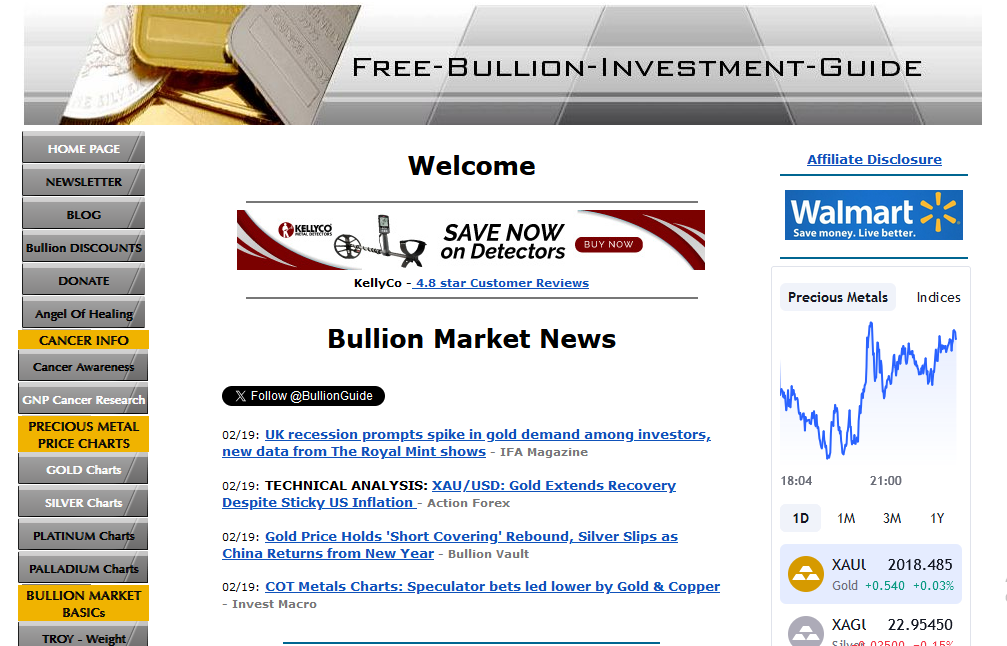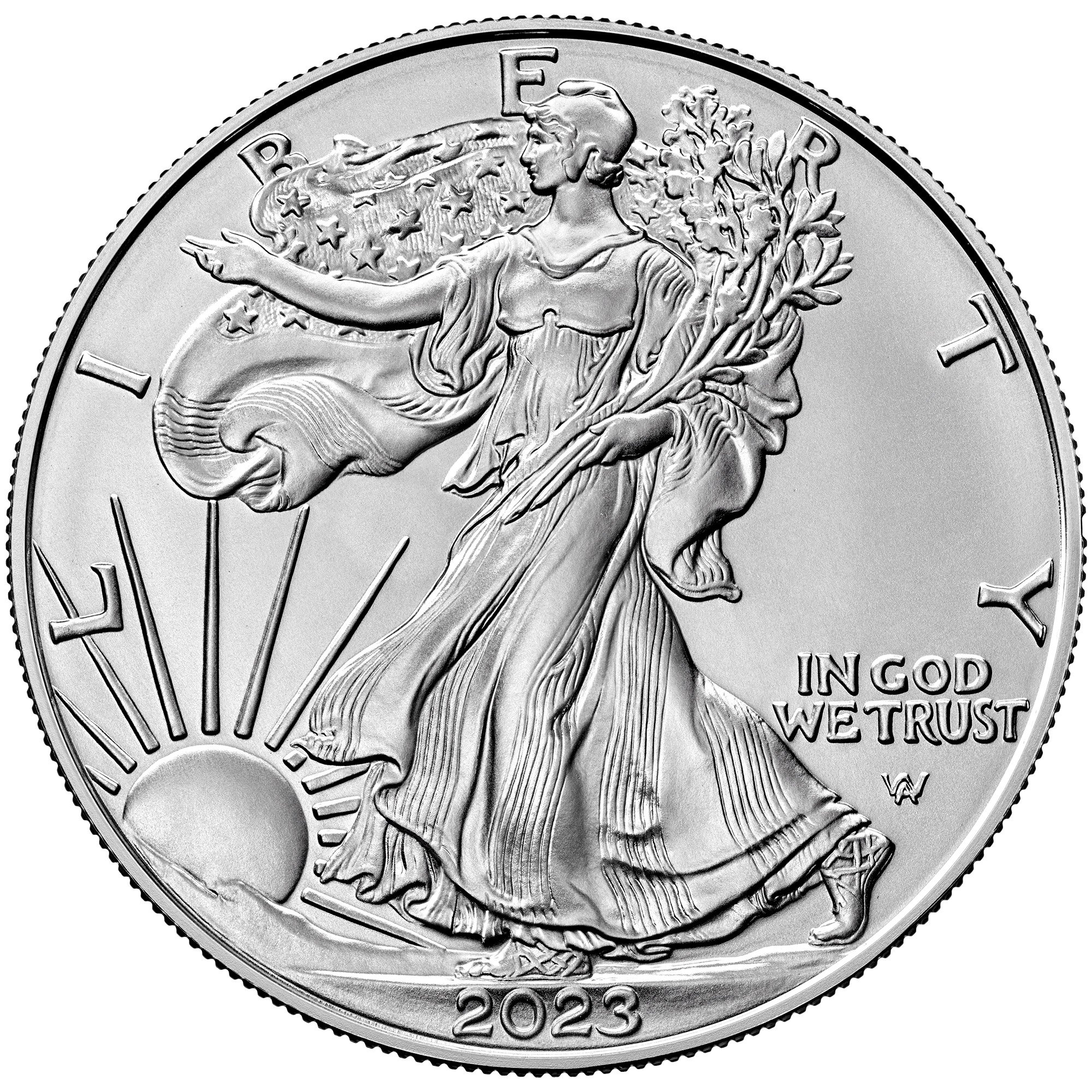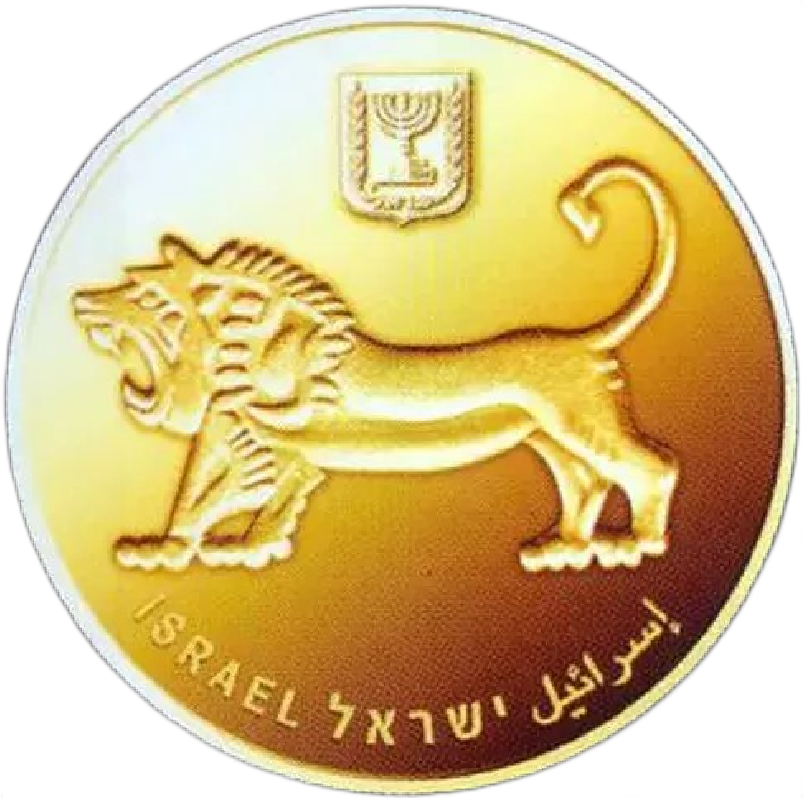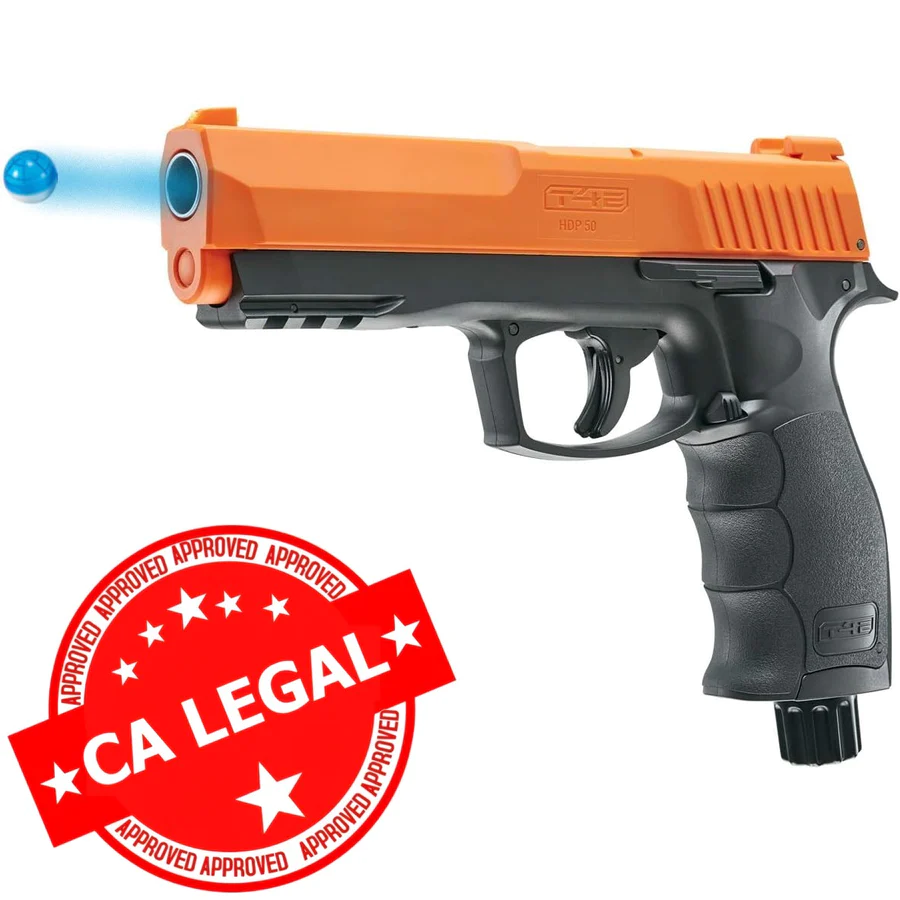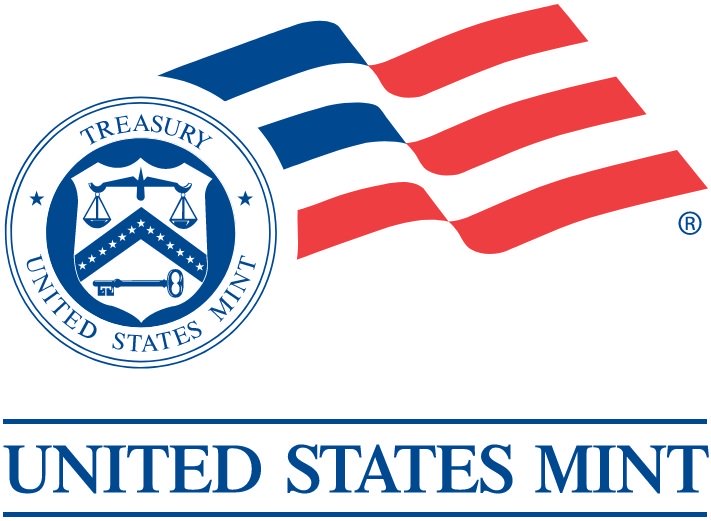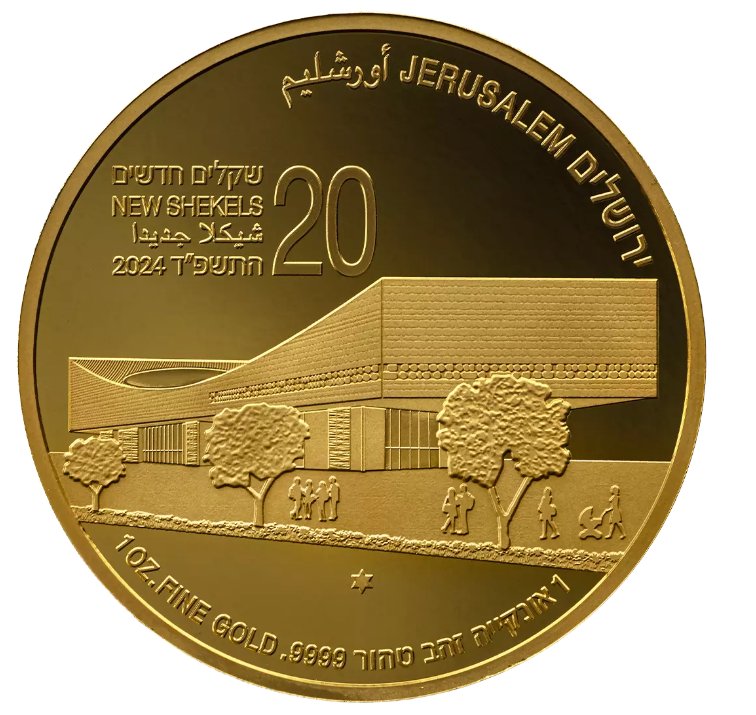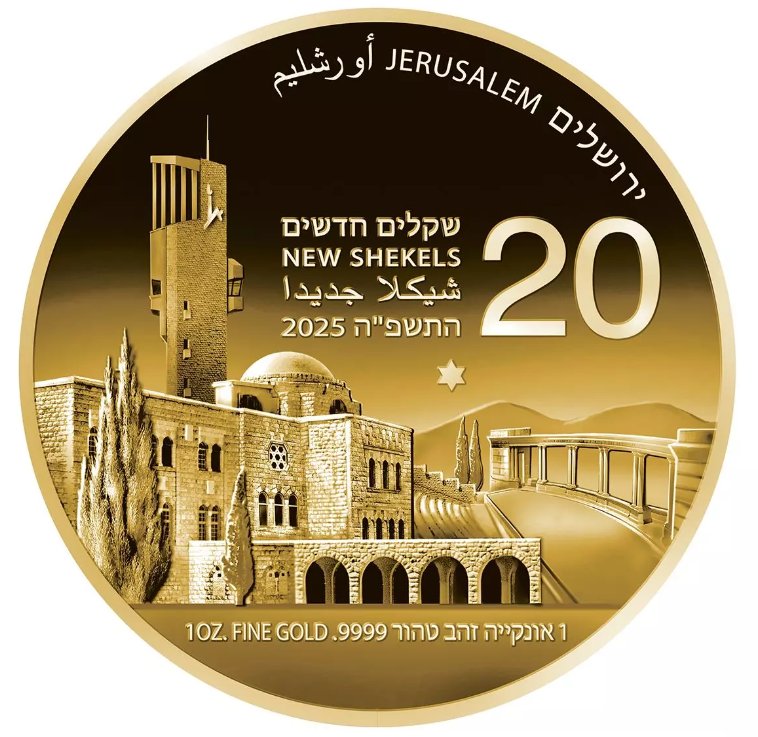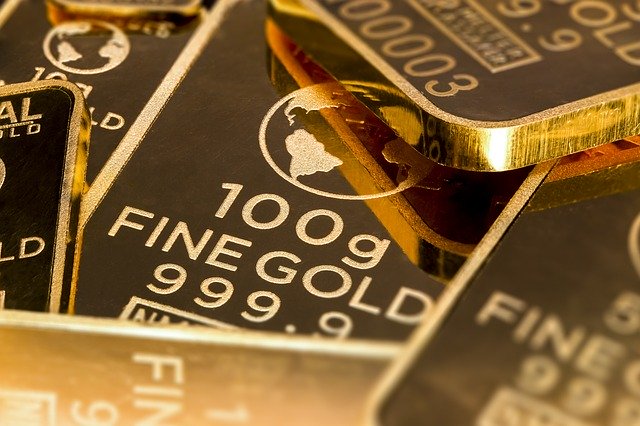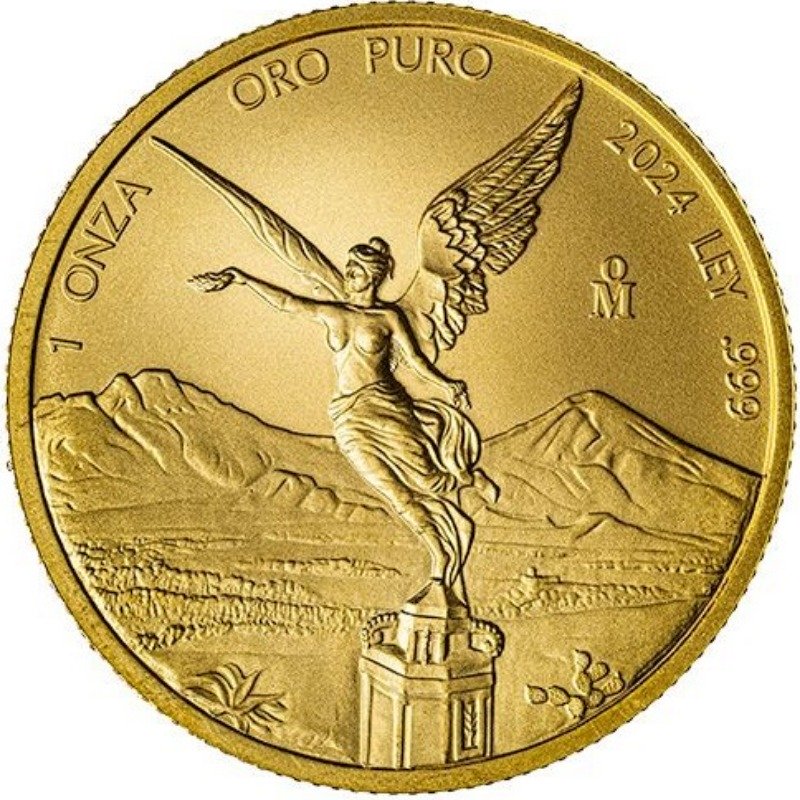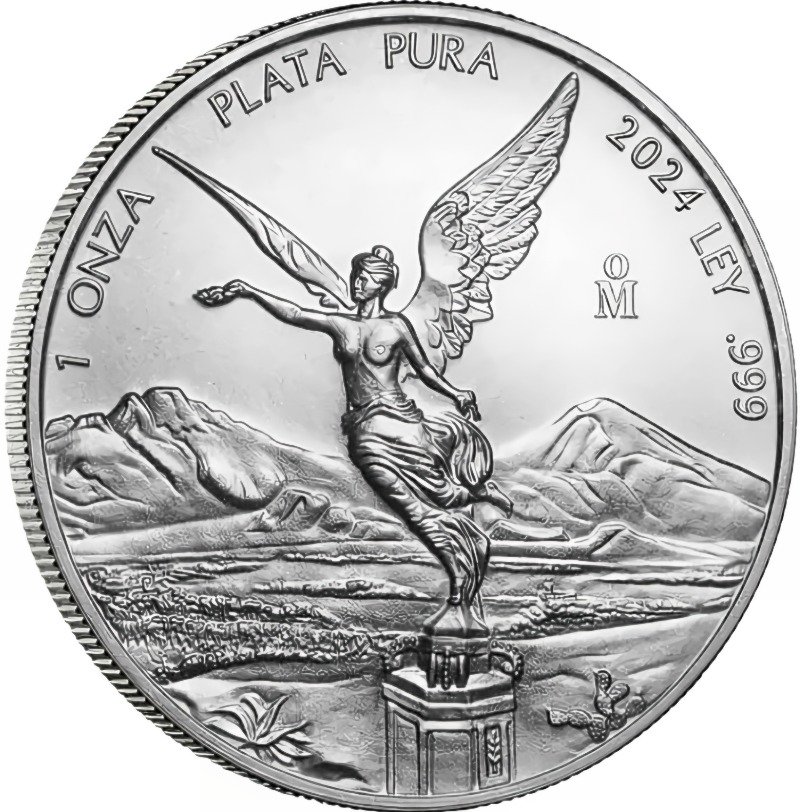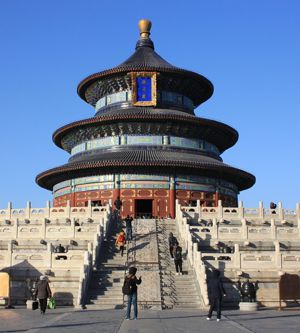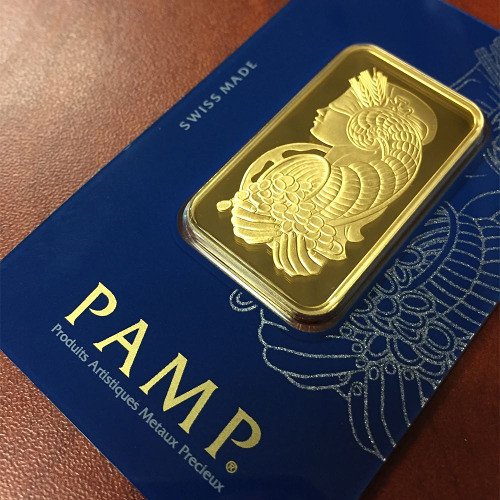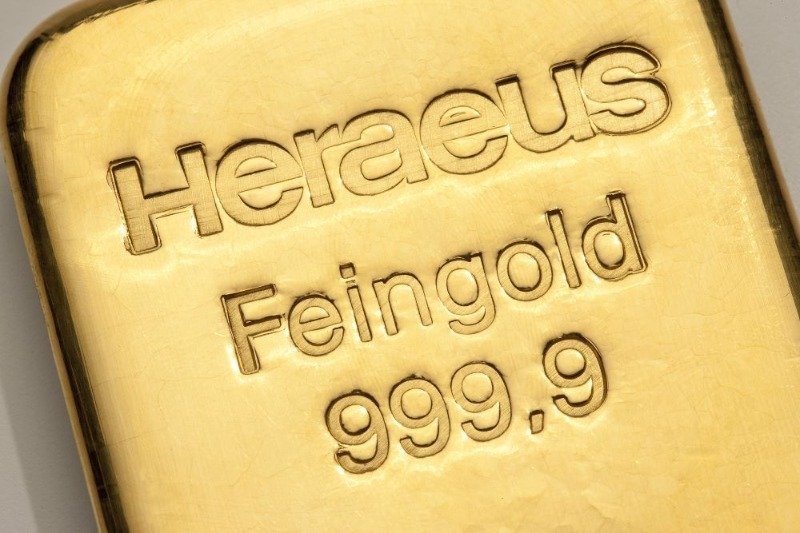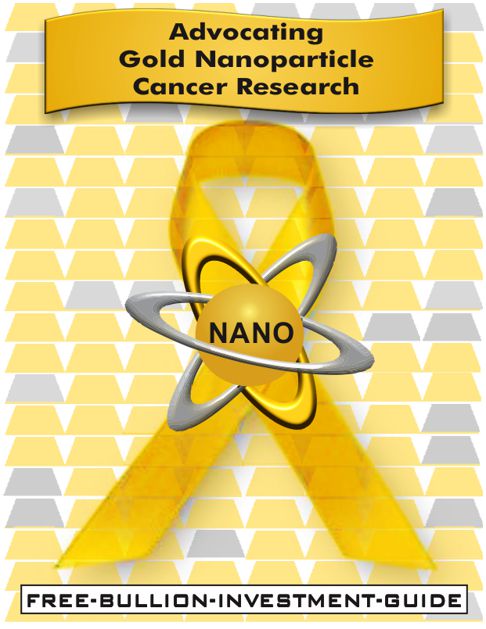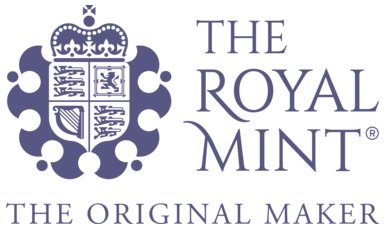Homepage / Popular Bullion Refiners: Johnson Matthey
Last Updated on 01/10/2025
Johnson Matthey
Bullion
The Johnson Matthey logo with its monogram and a Geologist's Pick & Hammer (⚒) is globally recognized by bullion investors as a symbol of quality.
However, in 2015, Johnson Matthey sold off its gold and silver refining business to Asahi Refining, a Japanese company.
Today, Johnson Matthey PLC (Public Limited Company) is a multinational chemical and platinum group metals (PGMs) technology company headquartered in London, England. The company has a market capitalization of over 6 billion dollars with 11,600 employees, operating in more than 30 countries.
The History of
Johnson Matthey Refining
The Johnson Matthey Company has a long history of refining platinum group metals (PGMs). The company's origins date back to the grandfather of Percival Norton Johnson, (John Johnson, Sr.) .
Percival Johnson co-founded the Johnson Matthey company with
George Matthey,
and he was a founding member of the Royal Society of Chemistry, the oldest national chemical society in the world.
Modest Beginnings
Percival's grandfather was an assayer of ores and metals in London during the late 1700's. After his grandfather's death, Percival's father, John Johnson, Jr. (1765–1831), took over his father's business and got involved in the platinum trade.
At the age of 15, Percival Johnson (1792-1866) became an apprentice in his father's firm. During his apprenticeship, he published the following paper titled: Experiments which prove platina, when combined with gold and silver, to be soluble in nitric acid. In the paper, Percival Johnson showed that small quantities of platinum mixed with gold and silver in nitric acid cause a facilitated separation of pure gold from the solution.
Through his work, Percival proved to his father that he was a skilled assayer and mineralogist.
Johnson & Company
In 1817, at twenty-five years of age, Percival left his father’s established assaying firm and set up his own “Assayer and Practical Mineralogist” business, named "Johnson and Company"; Percival set up the company with £150 of capital, the equivalent of £15,000 today.
The year "1817" is often regarded as the year the Johnson Matthey Company was founded. However, it wasn't until 21 years later that George Matthey began working for Percival Johnson. Thirteen years after that, he became a full partner in the company.
Johnson's knowledge of the assaying of precious metals allowed him to find the value and purity of a gold bar by applying chemical tests to the physical metal. His firm became the first London assayer to offer a guarantee on the quality of a gold bar; the business grew when Johnson began offering buy-backs on the bars of gold he assayed.
Percival built a small gold refinery for the gold bars coming into his growing business. He proved to his customers to be proficient at extracting Platinum Group Metals and other ores from gold bars, which established his firm in the London Bullion Market for its technical abilities.
He specialized in assaying and refining precious metals, particularly gold imported from Brazil: he perfected a method of extracting palladium from gold, improving its color.
Over the next several years, Johnson added a few partners to his company.
In 1832, Percival Johnson added George Stokes to the firm, creating the partnership of Johnson & Stokes.
Stokes died in 1835; a few years later, in 1837, William John Cock (1813–1892), a skilled assayer, joined the firm, creating the partnership of Johnson & Cock.
Young Chemist George Matthey
In 1838, George Matthey (1825–1913) joined the firm as an apprentice to Percival Johnson and William Cock at just thirteen years of age.
George Matthey was an excellent assayer and chemist; he studied at the Royal College of Chemistry, proving to Johnson that he was a fast learner while excelling in platinum refining. Matthey developed a "head for business" and wanted to build Johnson's firm into a great company.
During George Matthey's apprenticeship, Johnson's firm supplied platinum for Humphry Davy's electrochemistry experiments, as well as wire and foil for Michael Faraday's research, and aluminum for the Eros Statue in London's Piccadilly Circus.
In 1851, Percival Johnson made George Matthey a full partner in the firm, creating the Johnson Matthey Company. Shortly thereafter, in 1852, the Johnson Matthey company became an official assayer and refiner to the Bank of England.
Over the years, Percival Johnson & George Matthey expanded the company's capabilities, and their partnership transformed the business into the International Conglomerate it is today.
Johnson Matthey & P.R. Mallory
Established in 1916, the P.R. Mallory Company began as a manufacturer of tungsten wire. In 1924, its founder, Phillip Rogers Mallory, relocated the company to Indianapolis, Indiana.
P.R. Mallory later formed the Mallory Metallurgical Company. The company engineered electrical alloys and composites from silver, copper, and tungsten.
P.R. Mallory collaborated with Henry Ford to develop the first applications of Electrical Resistance Welding. Additionally, during World War II, P.R. Mallory partnered with Samuel Ruben to create the first mercury cell battery, and millions of these batteries were produced to support the war effort.
The P.R. Mallory Company revolutionized the battery industry by creating the alkaline manganese battery. In 1964, the company registered "Duracell" as its trademark.
In 1947, Johnson Matthey created a limited partnership with P.R. Mallory, creating Johnson Matthey & Mallory Limited, an industrial metals refinery headquartered in Toronto, Canada.
It is unknown when they started to produce investment-grade bullion, but it made gold and silver bullion bars and rounds until the end of the partnership in 1977.
The Johnson Matthey & Mallory partnership produced poured and minted gold and silver bars, and they had the identification marks found in this section.
CMW Inc., a welding company, was started by P.R. Mallory.
from Reputable Dealers
Johnson Matthey
Business Strategy Changes
Johnson Matthey, Inc. was the largest manufacturer of minted bullion bars in North America for nearly 30 years (1971-2000).
In 1996, Johnson Matthey decided to exit the business of fabricating silver and gold blanks for government mints. Then in 2000, the company ceased production of gold and silver bullion bars, with the exception of LBMA Gold and Silver "Good Delivery" bullion bars used in wholesale and professional investment markets. Johnson Matthey began producing 400-troy ounce "Good Delivery" gold bars in 1961.
In May 2012, Johnson Matthey licensed its name to Sunshine Minting, Inc. (SMI), which allowed Sunshine Minting to mint bars labeled with Johnson Matthey's name. Shortly thereafter, Sunshine Minting started mass-producing Silver bullion bars bearing the Johnson Matthey name and Trademark through key wholesalers like Dillon Gage Metals. See the article here.
Unfortunately, due to falling precious metals prices and a refocusing of the company's business, Johnson Matthey announced in late 2014 that they were exiting the Gold and Silver Refining business.
As of March 2015, Johnson Matthey no longer refines gold and silver bullion; this article from Bullion Vault explains why they made this decision: Johnson Matthey Exits Gold & Silver Refining After 160 Years.
Johnson Matthey is still a full member of the LBMA, as seen here, however, Johnson Matthey is no longer an accredited LBMA provider of "Good Delivery" bullion bars, as seen here.
Asahi Refining
Acquires Johnson Matthey's
Gold & Silver refining businesses
Founded in 1952, Asahi Refining is a precious metals recycling company based in Tokyo, Japan. On March 6th, 2015, Asahi Refining completed the acquisition of Johnson Matthey's gold and silver refining businesses. (Press Release)
The deal was valued at $186 million and included Johnson Matthey’s gold and silver refineries in Salt Lake City, USA, and Brampton, Canada, along with the company's casting services at its facility in St. Catharines, Canada. The purchase included all facilities and machinery used by Johnson Matthey for refining its products over the years, but it did not include the Johnson Matthey name.
At the time of the acquisition, Johnson Matthey's gold and silver refining employed approximately 340 people, and it had annual sales of $69 million.
Although Johnson Matthey has exited the bullion refining business, the company is still a full member of the LBMA, as seen here; however, Johnson Matthey is no longer an accredited LBMA provider of "Good Delivery" bullion bars, as seen here.
In the press release, the CEO of Asahi Holdings stated the following about the acquisition:
|
“We are proud and humbled to acquire a business with such a rich history
and tradition of quality, precision, and expertise. I am convinced that
combining these new facilities with our existing assets will foster
global growth and technological innovation well into the future. We also
look forward to developing our relationships with our global partners.” - Mitsuharu Terayama, Former CEO of Asahi Holdings, Inc. |
In February 2019, Asahi acquired Republic Metals Corporation, a Miami-based refiner, to strengthen its presence in the North American market.
Asahi Holdings is a London Good Delivery refiner; it now operates through its subsidiaries processing gold, silver, and platinum group metals.
Johnson Matthey
Notable Achievements
- 1852 - Appointed as the official assayers and refiner to the Bank of England.
- 1874 - Standardized kilogram as weight (kg)
- 1875 - supplies platinum leads for the first electric lamps
- 1914 - During the First World War, supplied 1.3 tonnes of platinum for the war effort.
- 1918 - employed Alan Richard Powell an experimentalist, which marked the start of some remarkable innovations.
- 1928 - created the Powell-Deering platinum method, which smelts ore and enables it to be refined, a process that is still carried out today
- 1928 - Johnson Matthey patents the only workable process for extraction and refining platinum group metals from Rustenburg ores (see the Merensky Reef).
- 1940s - Second World War, supplied vast amounts of materials for factories and the troops
- 1946 - wins exclusive contracts for refining British demonetized silver coinage
- 1960s - Developed fuel cell systems for NASA's moon landings
- 1974 - develops the world’s first catalysts to control vehicle pollution, in May of 1974
- 1990s - started work on battery technologies
- 2000 - receives the second MacRobert Award for the Continuously Regenerating Trap (CRT®) system to control emissions from heavy-duty diesel vehicles
- 2000 - JM produced components for cochlear implants, giving thousands of people the chance to hear for the first time
- 2001 - Work starts on the dedicated
Hydrogen
fuel cell membrane electrode assembly manufacturing facility
- 2012 - Johnson Matthey Battery Systems designs, develops, and manufactures integrated battery systems.
- 2020 - Manufactures hydrogen electrolysis components
The company is changing into new technologies, including fuel cells, medical technologies, and emission control catalysts.
from Reputable Dealers
Johnson Matthey
Bullion Rounds
Johnson Matthey is commonly known in the bullion market for the quality of their precious metals rounds and bars.
In the 1970s and 1980s, two major refining companies produced a significant portion of the world's investment-grade bullion. One of these was Johnson Matthey, and the other was Engelhard, who regularly competed for market share.
After Engelhard came out with "The American Prospector" round, Johnson Matthey created the "Freedom" Series rounds and other decorative silver rounds.
The Set of 10 Freedom Rounds included:
- The Right to Vote
- Freedom of Speech
- The Right to Privacy
- The Right to Bear Arms
- Freedom of the Press
- Freedom of Slavery
- Freedom of Religion
- The Right to Counsel
- The Right to Trial by Jury
- Freedom of Assembly

The American Way
Freedom Round
In addition to those ten Freedom rounds, Johnson Matthey produced another Freedom round, which had a different obverse and reverse.
Obverse
Relief:
- Old Mechanical Scale
Inscriptions:
- JOHNSON MATTHEY
- 1 TROY OUNCE
- .999 FINE SILVER
- 1985 (Year of Issue)
- USA
Reverse
Relief:
- Portrayed a family of U.S. Patriots standing over the continental United States.
Inscriptions:
- FREEDOM
- THE AMERICAN WAY
"Liberty Trade"
Gold & Silver Rounds
Johnson Matthey and Engelhard minted "Liberty Trade" bullion rounds and bars.
Johnson Matthey's Liberty Trade rounds were minted only in gold and silver, while Engelhard's Trade rounds were produced in gold, silver, and platinum.
Johnson Matthey Silver Liberty Trade rounds were made in the following sizes
in troy ounces:
- 1 troy oz
- 5 troy oz.
- 10 troy oz.
Johnson Matthey Gold Liberty Trade rounds were made in the following sizes in troy ounces:
- 1/10 troy oz.
- 1/20 troy oz.
Obverse
Relief:
- Lady Liberty with her right arm raised.
Inscriptions:
- 1985 (year of issue)
The rounds come in proof and brilliant uncirculated versions.
Reverse
Relief:
- Lady Liberty's hand holding a torch
Inscriptions:
- LIBERTY TRADE SILVER
- MADE IN U.S.A.
- JM ⚒ (pick & hammer)
- .999 FINE SILVER
- 1 TROY OZ.
- ©1985
- MTB (Manfra, Tordella & Brooks)
Liberty Trade Round - Identification Mark
To determine who made the "Liberty Round," look on the reverse side
of the round, toward the bottom, on the left; look for an
"JM with pick & hammer," which is the Johnson Matthey emblem and trademark or an "E" for
Engelhard which is Engelhard's Trademark.
Note: Below is more information about Johnson Matthey's Liberty Trade bullion bars. To discover more about Engelhard's Liberty Trade bullion rounds and bars, click here.
from Reputable Dealers
Commissioned Bullion Rounds
Private companies, Governments, and Organizations frequently commissioned Johnson Matthey to produce silver, gold, platinum, or palladium rounds that featured intricate artistic designs or logos.
These customers included the State of Montana, the State of Alaska, Xerox Corp., The Royal Bank, the State of Montana, The National Bank of New York, King Fook (a Hong Kong-based jewelry company), the Walt Disney Company, and many others.
The Royal Mint (UK) Delivery Rates • 4.8 star - Customer Reviews
Stillwater Palladium Rounds
In the mid-2000s, the Stillwater Mining Company of Billings, Montana, commissioned the production of palladium rounds and bars. The palladium in these rounds is from Stillwater Mines, refined by Johnson Matthey, and minted by the Northwest Territorial Mint.
The palladium rounds were named after the Lewis & Clark expedition of 1804, commemorating the 200th anniversary of the pioneer's expedition across America, commissioned by President Thomas Jefferson.
Each Stillwater Mining palladium round is sealed inside an assayers card, with a six-digit serial number on the reverse side of each card.
Obverse
Relief:
- Lewis & Clark plotting their exploration
Inscriptions:
- STILLWATER PALLADIUM
- LEWIS & CLARK CORPS OF DISCOVERY
- Year of Issue
Reverse
Relief:
- Buffalo
Inscriptions:
- UNITED STATES OF AMERICA
- 1 TROY OUNCE
- .9995 PURE PALLADIUM
Round Sizes
The palladium in these rounds comes from ore in Stillwater's Mines; it was refined by Johnson Matthey and minted by the Northwest Territorial Mint. The rounds are 99.95% fine palladium and were minted in the following sizes:
- 1/10 troy oz.
- 1/4 troy oz.
- 1/2
troy
oz.
- 1 troy oz.
Note: Unlike the bullion rounds, Stillwater Palladium bullion bars are known to have been minted only in one troy-ounce size. Near the bottom of this page, you'll find more information about these bullion bars.

Purchase
Johnson Matthey Bullion
from the Reputable Bullion Dealers below.
|
The Links below will take you directly to the page described. |
Free Shipping on Orders $199+
Free Shipping on Orders $199+
Asahi - Gold & Silver Bullion
Free Shipping on Orders $199+
America's Superstore offering Precious Metal Coins and Bars from Reputable Bullion Dealers
Asahi Bullion
Shipping prices
vary by item
Notice
- This site receives a commission when you purchase from the merchants above.
- No Personal Information is Obtained by this guide when you visit or order from any of the merchants above.
- See this guide's Affiliate Disclosure page for more information: here)

ExpressGoldCash - 4.9 star - Customer Reviews
Johnson Matthey
Bullion Bars
Types of Bullion Bars
Produced by Johnson Matthey
Johnson Matthey's refinery produced two bullion bars:
- Cast or Poured Bars
- Minted Bars.
|
Cast Bullion Bars are produced by pouring molten precious metal directly into a mold. Markings are usually stamped on the bar using a hammer or a press. In addition, company markings on cast bars will look depressed or "sunken" into the bar. |
Minted Bullion Bars are cut from a cast bar that has been rolled to a uniform thickness. The cutting is done with a die to create blanks with a specified dimension and weight. All the surfaces are smooth and even. Markings are usually stamped on the bar using a minting press. Company markings on minted bars will be "raised" due to this process. |

BGASC - Customer Reviews link
Johnson Matthey
Serial Numbers
It is common practice for refiners to put serial numbers on bullion to help individual investors keep track of the bars they own. Refiners rarely keep an accessible database of bullion bar serial numbers that weigh under LBMA Good Delivery Bar specifications.
Serial number sequences on Johnson Matthey Bars and Assay Cards are known as follows: (Includes: Gold, Silver, Platinum & Palladium)
- 1 Letter followed by 3 digit serial number
- 1 Letter followed by 5 digit serial number
- 1 Letter followed by 6 digit serial number
- 2 Letters followed by 5 digit serial number
- 4 digit: serial number
- 5 digit: serial number
- 6 digit: serial number
There is little uniformity among these numbers, except that bars produced in the same batch share the same series of serial numbers.
There is a list of Johnson Matthey silver bullion bars and serial numbers on All Engelhard's Johnson Matthey page here.
The following is how Johnson Matthey applied serial numbers to their Gold 400oz. LBMA "Good Delivery" Bars:
- 5 Numbers plus year & date: 1983 - 2005
- 6 Numbers plus year & date: 2005 - 2015
In 2015, Johnson Matthey ceased the production of LBMA "Good Delivery" bullion bars.
Commissioned
Bullion Bars
Private companies, Governments, and Organizations frequently commissioned Johnson Matthey to produce silver, gold, platinum, or palladium bars that featured intricate artistic designs or logos.
Customers included the Regency Bank, Sooters, TD Bank, Scotia Bank, Republic Bank, King Koil, Republic National Bank of New York, Royal Bank, Nerco Minerals, Co., and many others.
Johnson Matthey
Bar Sizes
Silver
Johnson Matthey used to produce silver bullion bars ranging from as small as 1 gram to LBMA "Good Delivery" bars weighing 1000 ounces.
The company manufactured several sizes of silver bullion bars, which were either minted or poured in the following sizes:
- 1 gram
- 5 gram
- 10 gram
- 1/2 troy oz.
- 1 troy oz.
- 2 troy oz.
- 3 troy oz.
- 4 troy oz.
- 5 troy oz.
- 7 troy oz.
- 10 troy oz.
- 20 troy oz.
- 25 troy oz.
- 1/2 kilo.
- 1 kilo.
- 50 troy oz.
- 100 troy oz.
- 1000 troy oz. LBMA "Good Delivery" silver bar
from Reputable Dealers
Liberty Trade Silver Bars
Johnson Matthey and Engelhard also manufactured Liberty Trade Silver bars.
Johnson Matthey "Liberty Trade" Silver Bars were produced in:
- 1 troy oz.
- 5 troy oz.
- 10 troy oz.
- 100 troy oz.
Obverse
Relief:
- Statue of Liberty
Inscription:
- Liberty
Reverse
Relief:
- MTB Logo (Manfra, Tordella & Brooks)
Inscription:
- .999
- FINE SILVER
- ONE TROY OUNCE
- Serial Number
- ©1982 MTB
- UNITED STATES OF AMERICA
- JM ⚒ (pick & hammer)
⚒
Johnson Matthey
Identification Marks
Silver
Johnson Matthey Silver bullion bar production took place in the following countries:
- Australia
- Belgium
- Canada
- United Kingdom
- United States
Below are the Identification Marks (ID marks) for the Johnson Matthey refineries in these countries.
Note: Most of the ID Marks are re-creations of the original photos.
United States - Silver Identification Marks
SLC - is the ID Mark for the Salt Lake City refinery.
The "JM" Diamond ID Mark on the left is usually on the same bar as the oval ID Mark on the right.
The "JM" Diamond ID Mark used by Johnson Matthey on their silver bullion bars was common.
United Kingdom - Silver Identification Marks
Belgium - Silver Identification Marks
Canada - Silver Identification Marks
The maple leaf (above) is usually on the same bar with one of the other Johnson Matthey identification marks.
Australia - Silver Identification Marks
There are no examples of Australian silver bullion bar ID Marks.
The following information is known to be inside the oval of a Johnson Matthey silver bullion bar refined in Australia.
- AGR MATTHEY with three stacked bars inside oval
- JOHNSON MATTHEY, AUSTRALIA SYDNEY inside oval
Other Johnson Matthey ID Marks
Johnson Matthey Identification Marks on silver bullion bars; however, none specify the refinery's country of origin.

Johnson Matthey
Bar Sizes
Gold
Johnson Matthey Gold bars are easier to find than Engelhard gold bars; Engelhard produced fewer gold bullion bars than Johnson Matthey.
The sizes of the gold Johnson Matthey bars:
- 1 gram
- 5 gram
- 10 gram
- 1/2 troy oz.
- 1 troy oz.
- 10 troy oz.
- 1 kilo.
- 100 troy oz
- 400 troy oz. LBMA "Good Delivery" gold bar
Johnson Matthey
Identification Marks
Gold
Johnson Matthey Gold bullion bar production took place in the following countries:
- Australia
- Belgium
- Canada
- United Kingdom / Hong Kong
- Untied States
Below are the Identification Marks (ID marks) for the Johnson Matthey refineries in these countries.
Note: Most of the ID Marks are re-creations of the original photos.
United States - Gold Identification Marks
United Kingdom - Gold Identification Marks
Gold Bullion refined at Johnson Matthey's Hong Kong facility had the following words inside the oval:
- JOHNSON MATTHEY - HONG KONG (ID Mark not available)
Australia - Gold Identification Marks
Canada - Gold Identification Marks
Belgium - Gold Identification Marks
Other Gold ID Marks
Johnson Matthey Identification Marks on gold bullion bars; however, none specify the refinery's country of origin.
from Reputable Dealers
Johnson Matthey
Platinum & Palladium Bar Sizes
Johnson Matthey made platinum and palladium bullion bars in the following sizes:
- 1 gram
- 5 gram
- 10 gram
- 1/2 oz.
- 1 oz.
- 5 oz.
- 10 oz.
- 10 oz.
- 1 kilogram (32.151 troy ounces) LPPM "Good Delivery" platinum or palladium bullion bar
- 100 oz.

The "JM with pick and hammer" ID Mark is the most common on minted (not poured) bullion bars.
All platinum and palladium bullion bars produced by Johnson Matthey are minted.
Stillwater Palladium Bars
In the mid-2000s, the Stillwater Mining Company of Billings, Montana, commissioned the production of palladium rounds and bars. The palladium in these bars is from Stillwater Mines, refined by Johnson Matthey, and minted by the Northwest Territorial Mint.
The palladium bars were named after the Lewis & Clark expedition of 1804, commemorating the 200th anniversary of the pioneer's expedition across America, commissioned by President Thomas Jefferson.
Obverse
Relief:
- Lewis & Clark
plotting their exploration
Inscriptions:
- STILLWATER PALLADIUM
Each Stillwater Mining round is inside an assayers card, with a six-digit serial number on the card.
Reverse
Relief:
- Stillwater Mining Logo (3 vertical wavy lines)
Inscriptions:
- 1 TROY OZ.
- PALLADIUM 999.5
- CERTIFIED STILLWATER PALLADIUM
The Stillwater palladium bars are only known to have been minted in one troy-ounce.

Sources:
Chemistry World - "Standing the test of time"
GoldBarsWorldWide.com - (.pdf)
George Matthey and the Building of the Platinum Industry
Johnson, Matthey and the Chemical Society - 200-yrs of precious metals expertise
Johnson Matthey Plc. - Encyclopedia.com
The Johnson Matthey Connection - St. Peter's Church Stoke Fleming
Other pages you may like...
|
|
|

BGASC - Customer Reviews link
Johnson Matthey bullion
For Bullion Market News...
Notice:
The charts, commentary, and information on the Free-Bullion-Investment-Guide.com are not meant to encourage you to invest or divest in any particular way.
|
Support this Guide & Paypal Thank You for Your Support |
|
|
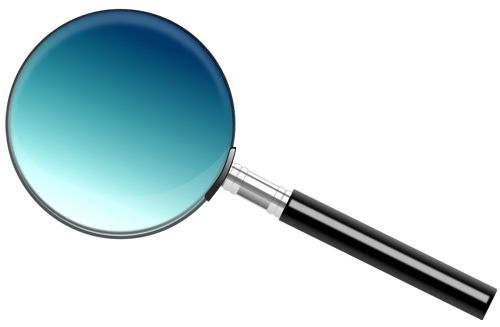 | |||||

This website is best viewed on a desktop computer.
Keep this Guide Online
& Paypal
Thank You for
Your Support
with Feedly
Search the Guide
| search engine by freefind | advanced |
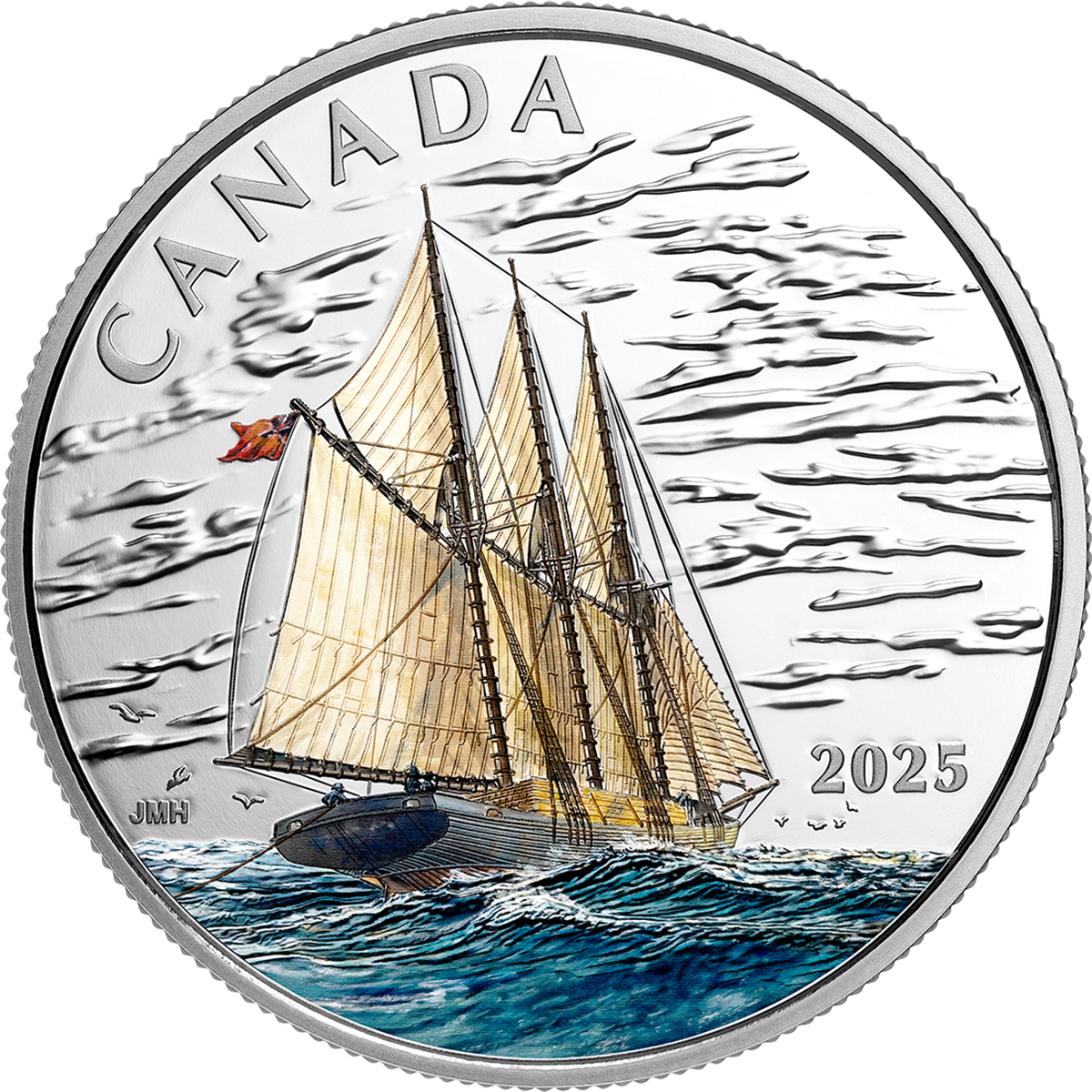
This schooner from Canada's Age of Sail comes alive in color [More]
or
From the U.K. Royal Mint
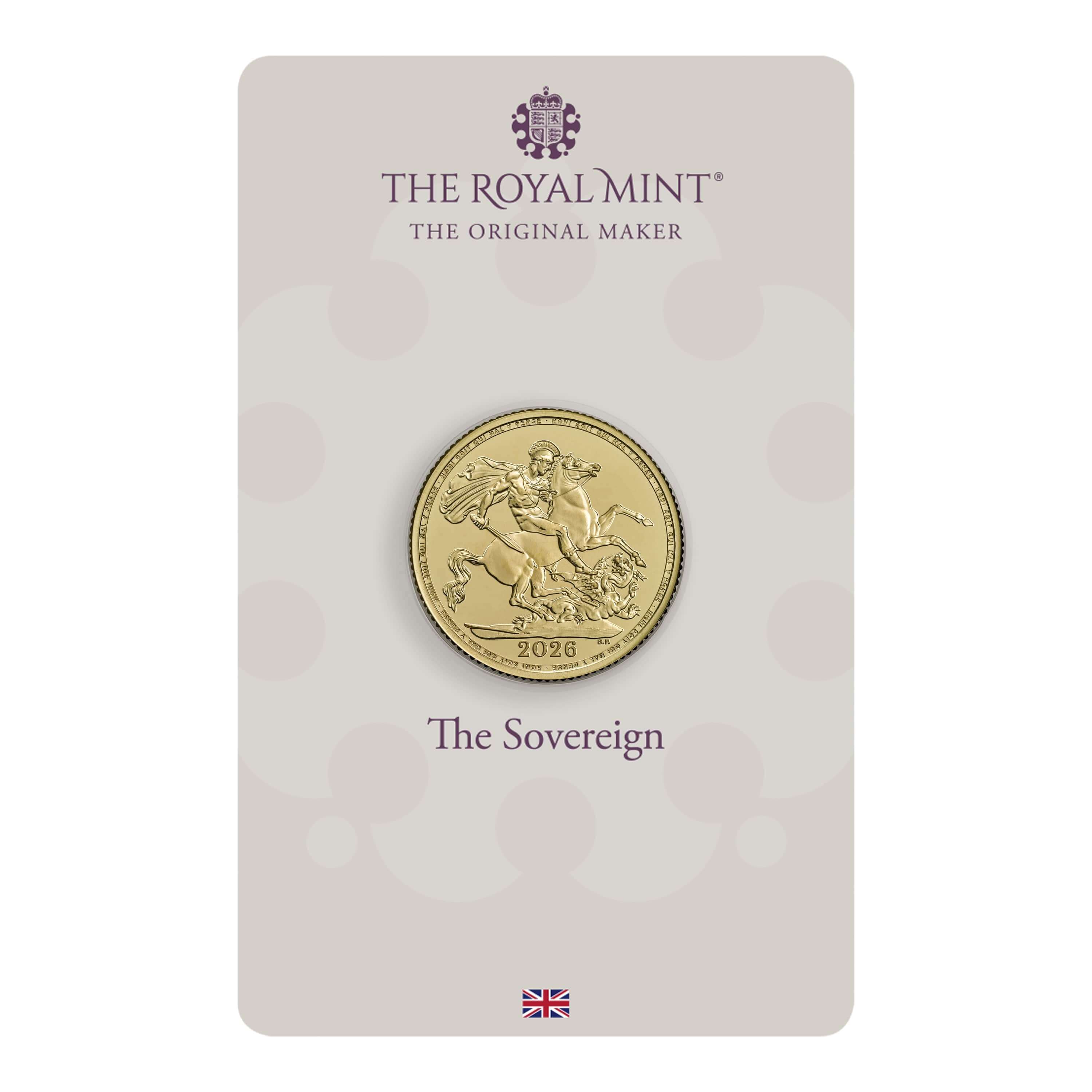

Daily
Newsletter
Updated Mintages for
American Gold Buffalo
American Gold Eagle
American Silver Eagle
2024 & 2025
Jerusalem of Gold Bullion
Coin photos
(bottom of page)
Mintages
for
2024
Gold & Silver Mexican Libertad
|
Gold Libertads |
Chinese Gold Coin Group Co.
& Chinese Bullion
Help Us Expand our Audience by forwarding our link
www.free-bullion-investment-guide.com.
Thank You!
Last Month's

In No Particular Order
October 2025
|
Gold and Silver: When to Take Profits? - 3 questions before you cash out... - Bullion Vault A Gold Crash Everyone Saw Coming Lures Bargain Hunters Worldwide - Bloomberg (Yahoo Finance) Info~Graphic: Charted: Gold and Silver Performance (1999-2025) - Mining Visuals Palladium Is the Mega Champ This Week. Here’s Why It Jumped and What to Watch Next - Finance Magnates Gold an ideal hedge against AI bubble: BofA - MINING.COM Report: Gold Demand Trends: Q3 2025 - World Gold Council Thoughts on the Dollar - Most investors don’t have direct exposure to the currency mix that makes up the Dollar Index (DXY), but that doesn’t mean it’s irrelevant. Far from it. DXY offers a useful lens through which to view the broader forces shaping the dollar’s direction. - Marc to Market Ray Dalio Says Investors Should Allocate 15% of Their Portfolios to Gold - GoldBroker.com Bargain Collector: Is “Inexpensive Gold” Even Possible? - When gold feels out of reach, think smaller. These 1/20th-ounce bullion coins from around the world might just be the hobby’s best hidden bargains. - Numismatic News From $2.9 billion to $36 Trillion, See Which US Presidents Added The Most To the US Debt - 24/7 Wall St. In the investigation of Istanbul Gold Refinery Inc., 20 people were arrested - 20 people who were referred to the court in the investigation of Istanbul Gold Refinery Inc. have been arrested.- Haberler Video: (33:50) Inside Sunshine Minting Inc's Operations - Video Title: "Inside a FORTRESS Containing $2BILLION in Gold and Silver!" - ProducerMicheal (YouTube) What Are We Buying When We Buy Gold? - Man Institute (.pdf) Report: The Big Long: The Chartbook of the In Gold We Trust Report 2025 - incrementum Junk Silver Isn’t Always Junk - Not all old, tarnished, and worn silver coins are melt-worthy junk, even if they’re commonly called junk silver. - GoldSeek Info~Graphic: Central Banks Now Hold More Gold Than U.S. Treasuries - Visual Capitalist Gold Nanoparticle Cancer ResearchGold Nanoparticles Boost Targeted Cervical Cancer Therapy - Bioengineer.org Sona Nanotech Reports 80% Response Rate in First-In-Human THT Cancer Therapy Study - CanTech Letter Nanotechnology's breakthrough: diagnosing and curing cancer - Exploring the advancements in nanomedicine for targeted therapies, enhanced diagnostics, and immune activation in cancer treatment - meer Nanotechnology Revolutionizes Cancer Treatment with Precision Drug Delivery and Reduced Side Effects - Bioengineer.org |
All Articles were Originally Posted on the Homepage




SD Bullion - Customer Reviews - 4.8 stars


18W LED Security Light (Dusk to Dawn & Motion Sensor) - $32.99
from:
 LED Lighting
LED Lighting



